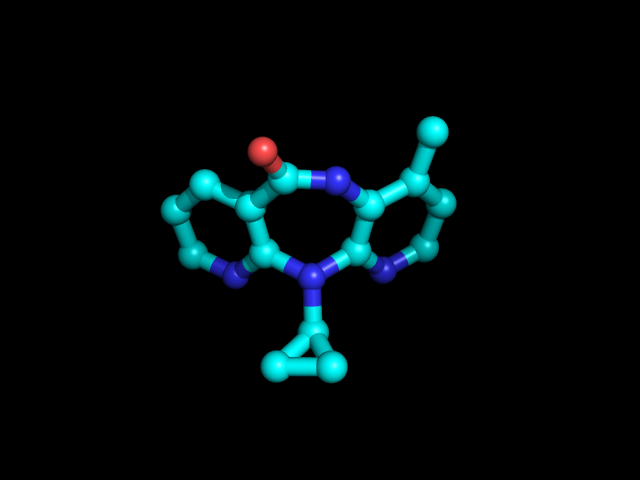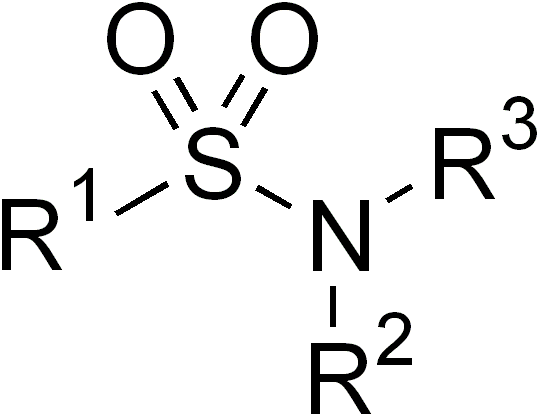|
Toxic Epidermal Necrolysis
Toxic epidermal necrolysis (TEN), also known as Lyell's syndrome, is a type of severe skin reaction. Together with Stevens–Johnson syndrome (SJS) it forms a spectrum of disease, with TEN being more severe. Early symptoms include fever and flu-like symptoms. A few days later the skin begins to blister and peel forming painful raw areas. Mucous membranes, such as the mouth, are also typically involved. Complications include dehydration, sepsis, pneumonia, and multiple organ failure. The most common cause is certain medications such as lamotrigine, carbamazepine, allopurinol, sulfonamide antibiotics, and nevirapine. Other causes can include infections such as '' Mycoplasma pneumoniae'' and cytomegalovirus or the cause may remain unknown. Risk factors include HIV/AIDS and systemic lupus erythematosus. Diagnosis is based on a skin biopsy and involvement of more than 30% of the skin. TEN is a type of severe cutaneous adverse reactions (SCARs), together with SJS, a SJS ... [...More Info...] [...Related Items...] OR: [Wikipedia] [Google] [Baidu] |
Stevens–Johnson Syndrome
Stevens–Johnson syndrome (SJS) is a type of severe skin reaction. Together with toxic epidermal necrolysis (TEN) and #Classification, Stevens–Johnson/toxic epidermal necrolysis (SJS/TEN) overlap, they are considered febrile mucocutaneous drug reactions and probably part of the same spectrum of disease, with SJS being less severe. Erythema multiforme (EM) is generally considered a separate condition. Early symptoms of SJS include fever and flu-like symptoms. A few days later, the skin begins to blister and peel, forming painful raw areas. Mucous membranes, such as the mouth, are also typically involved. Complications include dehydration, sepsis, pneumonia and multiple organ failure. The most common cause is certain medications such as lamotrigine, carbamazepine, allopurinol, sulfonamide antibiotics and nevirapine. Other causes can include infections such as ''Mycoplasma pneumoniae'' and cytomegalovirus, or the cause may remain unknown. Risk factors include HIV/AIDS and syste ... [...More Info...] [...Related Items...] OR: [Wikipedia] [Google] [Baidu] |
Alan Lyell
Alan Lyell (4 November 1917 – 2 November 2007) was a Scottish dermatologist Dermatology is the branch of medicine dealing with the skin.''Random House Webster's Unabridged Dictionary.'' Random House, Inc. 2001. Page 537. . It is a speciality with both medical and surgical aspects. A dermatologist is a specialist medi ... who described Lyell's syndrome. References * * * * 1917 births 2007 deaths Scottish dermatologists {{scotland-med-bio-stub ... [...More Info...] [...Related Items...] OR: [Wikipedia] [Google] [Baidu] |
Pain Medication
An analgesic drug, also called simply an analgesic, antalgic, pain reliever, or painkiller, is any member of the group of drugs used for pain management. Analgesics are conceptually distinct from anesthetics, which temporarily reduce, and in some instances eliminate, sensation, although analgesia and anesthesia are neurophysiologically overlapping and thus various drugs have both analgesic and anesthetic effects. Analgesic choice is also determined by the type of pain: For neuropathic pain, recent research has suggested that classes of drugs that are not normally considered analgesics, such as tricyclic antidepressants and anticonvulsants may be considered as an alternative. Various analgesics, such as many NSAIDs, are available over the counter in most countries, whereas various others are prescription drugs owing to the substantial risks and high chances of overdose, misuse, and addiction in the absence of medical supervision. Etymology The word ''analgesic'' derives fr ... [...More Info...] [...Related Items...] OR: [Wikipedia] [Google] [Baidu] |
Severe Cutaneous Adverse Reactions
Severe cutaneous adverse reactions (SCARs) are a group of potentially lethal adverse drug reactions that involve the skin and mucous membranes of various body openings such as the eyes, ears, and inside the nose, mouth, and lips. In more severe cases, SCARs also involves serious damage to internal organs. SCARs includes five syndromes: #Drug reaction with eosinophilia and systemic symptoms (i.e. DRESS syndrome), also termed drug-induced hypersensitivity syndrome (DIHS); #Stevens–Johnson syndrome (SJS); #Toxic epidermal necrolysis (TEN); # Stevens-Johnson/toxic epidermal necrolysis overlap syndrome (SJS/TEN); and #Acute generalized exanthematous pustulosis (AGEP). The five disorders have similar pathophysiologies, i.e. disease-causing mechanisms, for which new strategies are in use or development to identify individuals predisposed to develop the SCARs-inducing effects of specific drugs and thereby avoid treatment with them. Maculopapular rash (MPR) is a less-well defined ... [...More Info...] [...Related Items...] OR: [Wikipedia] [Google] [Baidu] |
Cytomegalovirus
''Cytomegalovirus'' (CMV) (from ''cyto-'' 'cell' via Greek - 'container' + 'big, megalo-' + -''virus'' via Latin 'poison') is a genus of viruses in the order '' Herpesvirales'', in the family '' Herpesviridae'', in the subfamily '' Betaherpesvirinae''. Humans and other primates serve as natural hosts. The 11 species in this genus include '' human betaherpesvirus 5'' (HCMV, human cytomegalovirus, HHV-5), which is the species that infects humans. Diseases associated with HHV-5 include mononucleosis and pneumonia, and congenital CMV in infants can lead to deafness and ambulatory problems. In the medical literature, most mentions of CMV without further specification refer implicitly to human CMV. Human CMV is the most studied of all cytomegaloviruses. MX2/MXB protein was identified as a restriction factor for herpesviruses, which acts at a very early stage of the replication cycle and MX2/MXB restriction of herpesvirus requires GTPase activity. Taxonomy Within the '' Her ... [...More Info...] [...Related Items...] OR: [Wikipedia] [Google] [Baidu] |
Mycoplasma Pneumoniae
''Mycoplasma pneumoniae'' is a species of very small-cell bacteria that lack a cell wall, in the class Mollicutes. ''M. pneumoniae'' is a human pathogen that causes the disease Mycoplasma pneumonia, a form of atypical bacterial pneumonia related to cold agglutinin disease. It is one of the smallest self-replicating organisms and its discovery traces back to 1898 when Nocard and Roux isolated a microorganism linked to cattle pneumonia. This microbe shared characteristics with pleuropneumonia-like organisms (PPLOs), which were soon linked to pneumonias and arthritis in several animals. A significant development occurred in 1944 when Monroe Eaton cultivated an agent thought responsible for human pneumonia in embryonated chicken eggs, referred to as the "Eaton agent." This agent was classified as a bacteria due to its cultivation method and because antibiotics were effective in treating the infection, questioning its viral nature. In 1961, a researcher named Robert Chanock, collabo ... [...More Info...] [...Related Items...] OR: [Wikipedia] [Google] [Baidu] |
Nevirapine
Nevirapine (NVP), sold under the brand name Viramune among others, is a medication used to treat and prevent HIV/AIDS, specifically HIV-1. It is generally recommended for use with other antiretroviral medications. It may be used to prevent mother to child spread during birth but is not recommended following other exposures. It is taken by mouth. Common side effects include rash, headache, nausea, feeling tired, and liver problems. The liver problems and skin rash may be severe and should be checked for during the first few months of treatment. It appears to be safe for use during pregnancy. It is a non-nucleoside reverse transcriptase inhibitor (NNRTI) and works by blocking the function of reverse transcriptase. Nevirapine was approved for medical use in the United States in 1996. It is on the World Health Organization's List of Essential Medicines. It is available as a generic medication. Medical uses Nevirapine is used in people six years of age and older infected with H ... [...More Info...] [...Related Items...] OR: [Wikipedia] [Google] [Baidu] |
Sulfonamide Antibiotics
Sulfonamide is a functional group (a part of a molecule) that is the basis of several groups of medication, drugs, which are called sulphonamides, sulfa drugs or sulpha drugs. The original antibacterial sulfonamides are synthetic antimicrobial agents that contain the Sulfonamide (chemistry), sulfonamide group. Some sulfonamides are also devoid of antibacterial activity, e.g., the anticonvulsant sultiame. The sulfonylureas and thiazide diuretics are newer drug groups based upon the antibacterial sulfonamides. Drug allergy, Allergies to sulfonamides are common. The overall incidence of adverse drug reactions to sulfa antibiotics is approximately 3%, close to penicillin; hence medications containing sulfonamides are prescribed carefully. Sulfonamide drugs were the first broadly effective antibacterials to be used systemically, and paved the way for the antibiotic revolution in medicine. Function In bacteria, antibacterial sulfonamides act as competitive inhibitors of the enz ... [...More Info...] [...Related Items...] OR: [Wikipedia] [Google] [Baidu] |
Allopurinol
Allopurinol is a medication used to decrease hyperuricemia, high blood uric acid levels. It is specifically used to prevent gout, prevent specific types of kidney stones and for the high uric acid levels that can occur with chemotherapy. It is taken Oral administration, orally (by mouth) or intravenously (injected into a vein). Common side effects when used orally include itchiness and rash. Common side effects when used by injection include vomiting and kidney problems. While not recommended historically, starting allopurinol during an attack of gout appears to be safe. In those already on the medication, it should be continued even during an acute gout attack. While use during pregnancy does not appear to result in harm, this use has not been well studied. Allopurinol is in the xanthine oxidase inhibitor family of medications. Allopurinol was approved for medical use in the United States in 1966. It is on the WHO Model List of Essential Medicines, World Health Organizatio ... [...More Info...] [...Related Items...] OR: [Wikipedia] [Google] [Baidu] |
Carbamazepine
Carbamazepine, sold under the brand name Tegretol among others, is an anticonvulsant medication used in the treatment of epilepsy and neuropathic pain. It is used as an adjunctive treatment in schizophrenia along with other medications and as a Therapy#Lines of therapy, second-line agent in bipolar disorder. Carbamazepine appears to work as well as phenytoin and valproate for focal and generalized seizures. It is not effective for absence seizure, absence or myoclonic seizures. Carbamazepine was discovered in 1953 by Swiss chemist Walter Schindler. It was first marketed in 1962. It is available as a generic medication. It is on the WHO Model List of Essential Medicines, World Health Organization's List of Essential Medicines. In 2020, it was the 185th most commonly prescribed medication in the United States, with more than 2million prescriptions. Photoswitchable analogues of carbamazepine have been developed to control its pharmacological activity locally and on demand using ... [...More Info...] [...Related Items...] OR: [Wikipedia] [Google] [Baidu] |
Lamotrigine
Lamotrigine ( ), sold under the brand name Lamictal among others, is a medication used to treat epilepsy and stabilize mood in bipolar disorder. For epilepsy, this includes focal seizures, tonic-clonic seizures, and seizures in Lennox-Gastaut syndrome. In bipolar disorder, lamotrigine has not been shown to reliably treat acute depression in any groups except for the severely depressed; but for patients with bipolar disorder who are not currently symptomatic, it appears to reduce the risk of future episodes of depression. Lamotrigine is also used off label for unipolar depression (major depressive disorder) and depersonalization-derealization disorder. Common side effects include nausea, sleepiness, headache, vomiting, trouble with coordination, and rash. Serious side effects include excessive breakdown of red blood cells, increased risk of suicide, severe skin reaction (Stevens–Johnson syndrome), and allergic reactions, which can be fatal. Lamotrigine is a phenyltriazi ... [...More Info...] [...Related Items...] OR: [Wikipedia] [Google] [Baidu] |
Dehydration
In physiology, dehydration is a lack of total body water that disrupts metabolic processes. It occurs when free water loss exceeds intake, often resulting from excessive sweating, health conditions, or inadequate consumption of water. Mild dehydration can also be caused by immersion diuresis, which may increase risk of decompression sickness in divers. Most people can tolerate a 3-4% decrease in total body water without difficulty or adverse health effects. A 5-8% decrease can cause fatigue and dizziness. Loss of over 10% of total body water can cause physical and mental deterioration, accompanied by severe thirst. Death occurs with a 15 and 25% loss of body water.Ashcroft F, Life Without Water in Life at the Extremes. Berkeley and Los Angeles, 2000, 134-138. Mild dehydration usually resolves with oral rehydration, but severe cases may need intravenous fluids. Dehydration can cause hypernatremia (high levels of sodium ions in the blood). This is distinct from hypovolemia ... [...More Info...] [...Related Items...] OR: [Wikipedia] [Google] [Baidu] |







